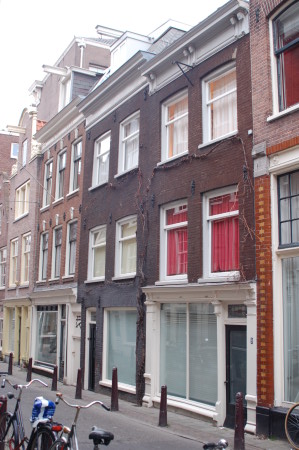I hear a lot of people say well intentioned but not always accurate things about tomatoes, and it’s time to set the record straight.
Disease Resistance
It’s true some (not all) modern tomato varieties have some special disease resistance. The most important diseases are Fusarium and Verticillium wilts. These are different but similar diseases, with nearly identical symptoms, and depending on your climate you may have one or the other in your soil but probably not both. If your plants get this the leaves will become seriously wilted, and while they may still produce some tomatoes the harvest will be much lower than usual. This is soil borne, so you may have it in one part of your garden but not another. It’s not very contagious so if a plant gets it you may as well let it grow and see what happens.
While these wilt diseases are common, most gardeners probably won’t have them in their gardens in which case they are simply not an issue. It’s not worth losing sleep over this until you know for sure you have this problem! If a wilt disease is present in your soil, there is little else you can do except grow resistant tomato varieties or grow your plants in pots with known disease free soil like purchased potting soil, home made compost or a mix of the two.
It’s worth mentioning some heirloom varieties may have some resistance to these wilt diseases, no one really knows because there hasn’t been much research done on this.
For the home gardener, modern tomatoes don’t have any other important disease resistance!
The other disease resistance in modern tomatoes is only important to farmers. For example the tobacco mosaic virus generally only occurs in greenhouses, but because it is common in tobacco plants if you do smoke you should be sure to keep your tobacco away from your tomato plants and wash your hands before gardening.
Heirloom tomatoes have disease resistance too! For most other plant diseases, some resistance can be found in a few heirloom tomato varieties. For example common tomato and potato diseases are early and late blight, and while no tomato has complete resistance to these, some currant tomatoes have shown a little resistance. No commercial varieties have any resistance to these two blights.
It all depends on what diseases you have in your garden, and it’s important to understand this before coming to the conclusion that choosing either commercial or heirloom varieties is the answer.
It’s Not Necessarily True Hybrids Are More Productive
There is often the assertion, usually by seed companies trying to sell more seeds, that hybrid varieties are more productive. This is a very disputed assertion! The basic idea is that if you have a highly inbreed plant variety, it can show signs of inbreeding depression which can result in lower yields. Since creating a hybrid variety is essentially the opposite of inbreeding, it must result in higher yields.
The flaw in this logic is that tomatoes are naturally inbreeding plants, and don’t usually have problems with inbreeding depression.
It’s not that productivity gains are not possible in hybrids, but it’s not always true and many heirloom varieties can be as productive as hybrids.
It’s Not Always True Heirloom Tomatoes Taste Better Than Hybrids
Commercial varieties are almost always breed for supermarket cosmetics, growing and transportation convenience and low cost of production. Taste is not usually a factor when they are developed.
If you compare a heirloom tomato to a commercial variety under these circumstances, it’s certain to taste better.
You can make your own hybrids! By choosing two of your favorite heirloom tomatoes and cross-pollinating them, you can easily end up with a tomato that tastes better than any pure breed OP or heirloom variety.
The parent varieties of commercial varieties are generally kept secret, so it’s not possible to experiment with or improve on these. If you make your own hybrids you can collaborate with other gardeners and work together on finding great combinations.
There Are Problems With Heirloom Varieties
All food plant varieties need to be periodically ‘grown out’. This means a large number of plants, sometimes numbering in the hundreds, are grown out and selected for desirable traits. Plants with undesirable traits are rogued out or removed, and seeds are saved from plants with desirable traits. When this isn’t done, the genetics of a particular variety will deteriorate slowly over time and develop undesirable traits leading to problems like susceptibility to diseases or pests, loss of productivity and loss of quality.
Growing out plant varieties takes time and money. Some home or hobby gardeners do large scale grow outs, but this involves only a small percentage of heirloom varieties. Commercial varieties simply have the money and support of large companies behind them who can afford to grow them out more often and maintain them better.
Many heirloom varieties are in a very bad state in this way! This is not just tomatoes but all different kinds of fruits and vegetables.
Also, because many heirloom varieties were developed in a single person’s garden or in a single region they have become ‘landraces’, that is well suited for that particular region. If you try to grow a variety like this in a different region, it likely won’t perform as well.
There is Something You Can Do About This
It may not be possible for you to grow hundreds of plants in your garden and do a full scale grow out of a particular variety, but you can do this yourself on a smaller scale.
If for example you are able to grow in the neighborhood of 10-50 plants of the same tomato variety, only save seeds from the best ones and hopefully do this for a few years in a row, you will likely end up with a significantly improved variety which has also been acclimated specifically to your garden.
Other Things You Can Do To Improve Your Chances
Talk to other gardeners and find out what’s done well for them. In particular if a nearby gardener has found something that does well in your climate, consider getting some seeds from them and growing it too.
Not all seeds are equal. If something didn’t do well for you, but did well for someone else who got the seeds from somewhere else, consider getting some of the same seeds and trying again. I know the Seed Savers Exchange is doing grow outs of many of their varieties, and I imagine other seed companies are by now too. Consider that improved seeds may soon become available for popular varieties.



